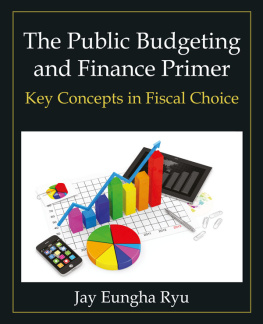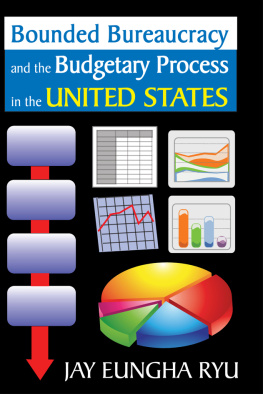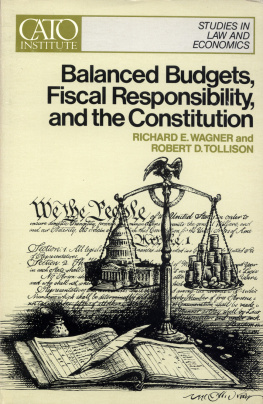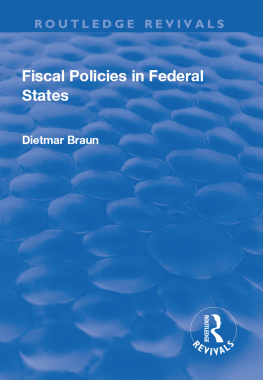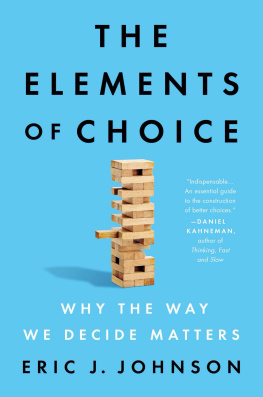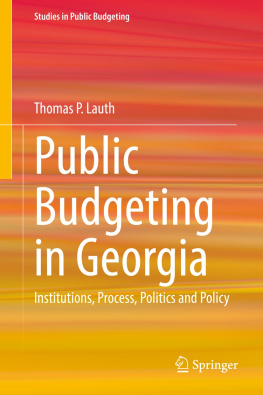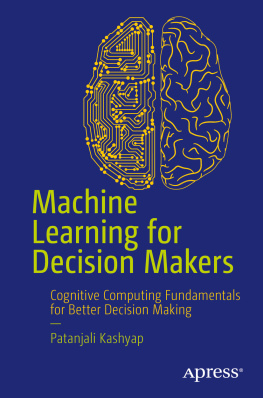The main purpose of this book is to shed light on what factors affect decisions on resource allocation. This book summarizes key concepts in fiscal choice in the public sector for both practitioners and scholars of public budgeting and finance, from a perspective of choice between politics and economics in completely stand-alone chapters for each concept. In short, public-budget decision makers attempt to be rational in allocating scarce resources but find that there are numerous obstacles to their rational attempts. Politics, institutions, and most of all human beings endless quest for resources are the most decisive drivers of fiscal choice in the public sector.
introduces budget institutions and processes at various levels of government. Public budgets are not formed through arbitrary decisions by random individuals. For instance, an individual cannot decide to spend a certain amount of his or her states sales tax revenue to renovate state highway systems. There are highly institutionalized procedures for making fiscal choices, especially at the national and state levels. Centrally coordinated budget preparation in both executive and legislative branches constitutes a substantial portion of U.S. budget processes. Other rules and requirements strongly augment or restrict the discretion of budget decision makers. Sometimes, court decisions mandate executive agencies to redress the condition of litigated service. In addition, partisan configurations over budget processes almost always influence how much of the budget should be spent on what programs.
introduces various techniques of budget allocation that are expected to improve efficiency and effectiveness of public goods and services. Budget decision makers have attempted to maximize utility from public budget expenses by adopting rationality-based budget-allocation techniques, but their implementation is often stymied by budget institutions and is heavily swayed by partisan politics. However, rational approaches to budget allocation have recently come back into the field of public budget allocation. This part summarizes these rationality-based resource-allocation techniques that various public and private organizations have adopted in their budget decision-making processes. These techniques borrow fundamental ideas from welfare economics. This part discusses strengths and limits of rational budget-allocation techniques.
describes budget theories that have been developed for the past several decades to explain the aspiration and behaviors of budget decision makers under such institutions and processes. Capacity limits and institutional conflicts are two buzzwords that characterize the aspiration and behaviors. They also result in highly predictable and stable interactions among such main budget actors as executive agencies, chief executive officers, and legislators. In addition, the capacity limits and institutional conflicts typically cause incremental budget changes across years. Some recent theories have attempted to explain sudden, dramatic budget changes, but the limits and conflicts explain such dramatic budget changes very well. An economics-based framework sometimes presents observations of the aspiration and behaviors of budget decision makers and nicely explains budget expansion.
slightly differs from the first three parts in that it basically introduces economics-based analyses of public goods and services. Public finance scholars have developed a field known as public choice, mostly focused on local jurisdictions. Its main framework is demand-and-supply schedules, typically found in microeconomics. This part also introduces the principles of taxation, such as revenue collection, efficiency, and equity. What are the best conditions for revenue maximization? Various tax breaks threaten the bases of governmental taxes, thus jeopardizing governmental revenue collection. Sound tax principles suggest that no taxation can distort the private market economy. In many cases, however, tax cuts are provided as a way to induce businesses to locate in governmental jurisdictions or to stimulate sagging economies. At the same time, taxation should treat taxpayers with different abilities to pay differently while guaranteeing that taxpayers with equal capacities shoulder equal tax burdens. Efficiency and equity are heavily driven by partisan politics. Another important dimension in fiscal choice is how to gauge the fiscal capacity of governmental jurisdictions. Since the amount of intergovernmental grants is often decided based on recipient governments fiscal capacity, measures of fiscal capacity and stress will be useful for practitioners as well as scholars.
summarizes theoretical and empirical observations of the fiscal impacts of diverse IGR grants.
introduces main topics pertaining to macroeconomic theories and policies. Many topics in this part are somewhat technical, and public budget practitioners and scholars might think that they are irrelevant for understanding public budget and finance decisions. However, since the 2008 financial market crisis, both public and private sectors have been converging to the extent that focusing on only one sector does not guarantee an accurate investigation of fiscal choice mechanisms in the two sectors. Without doubt, macroeconomic theories and policies provide us with elaborate frameworks showing how the two sectors are linked. Classical approaches to macroeconomic activities explain the labor market equilibrium, the link of both saving and investment to interest rates, and a theory of price level. Keynesian approaches introduce why aggregate-demand schedules are most important to explain macroeconomic activities. This part then discusses how each of these theories is linked to a specific macroeconomic policy. It also introduces new approaches to describing and prescribing macroeconomic activities. One important caveat regarding macroeconomic policies is that they are subjected to strong congressional budget procedures. Key congressional procedures to decide the federal spending level are summarized as well. Finally, this part discusses the mechanics of debt management by state and local governments. Macroeconomic theories and policies are primarily related to debt-financed governmental expenditures to stimulate the national economy. In contrast, state and local governments tend to borrow monies to finance capital projects. This part shows the structures of state and local bonds and the factors affecting them.

